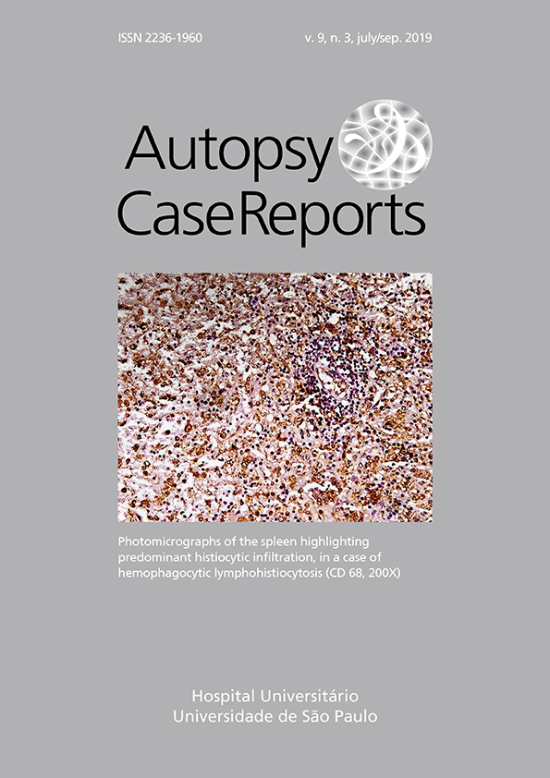Pulmonary capillary hemangiomatosis: a lesson learned
DOI:
https://doi.org/10.4322/acr.2019.111Keywords:
Pulmonary hypertension, Pulmonary veno-occlusive disease, pulmonary capillary hemangiomatosis, pulmonary heart diseaseAbstract
Pulmonary capillary hemangiomatosis (PCH) is a rare and controversial entity that is known to be a cause of pulmonary hypertension and is microscopically characterized by proliferation of dilated capillary-sized channels along and in the alveolar walls. Clinically, it is mostly seen in adults. Clinical features are characterized by nonspecific findings such as shortness of breath, cough, chest pain, and fatigue. It can be clinically indistinguishable from pre-capillary pulmonary arterial hypertension disorders such as primary pulmonary arterial hypertension (PAH) or chronic thromboembolic pulmonary hypertension. However, the diagnostic distinction, which usually requires a multidisciplinary approach, is crucial in order to avoid inappropriate treatment with vasodilator medications usually used for PAH treatment. Prognosis of PCH remains poor with lung transplant being the only definitive treatment. We report an autopsy case of pulmonary capillary hemangiomatosis unmasked at autopsy that was treated with a prostacyclin analog, usually contraindicated in such patients. We emphasize that this entity should always be on the differential diagnosis in a patient with pulmonary hypertension and requires great vigilance on the part of the clinician, radiologist and pathologist to make the diagnosis and guide appropriate management.
Downloads
Published
Issue
Section
License
Copyright
Authors of articles published by Autopsy and Case Report retain the copyright of their work without restrictions, licensing it under the Creative Commons Attribution License - CC-BY, which allows articles to be re-used and re-distributed without restriction, as long as the original work is correctly cited.



